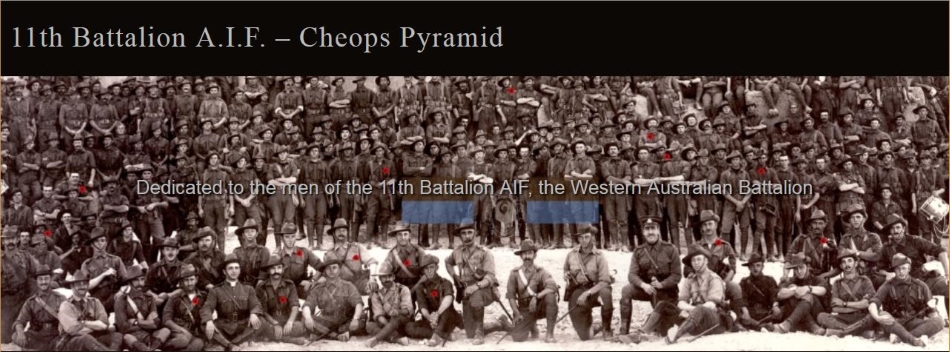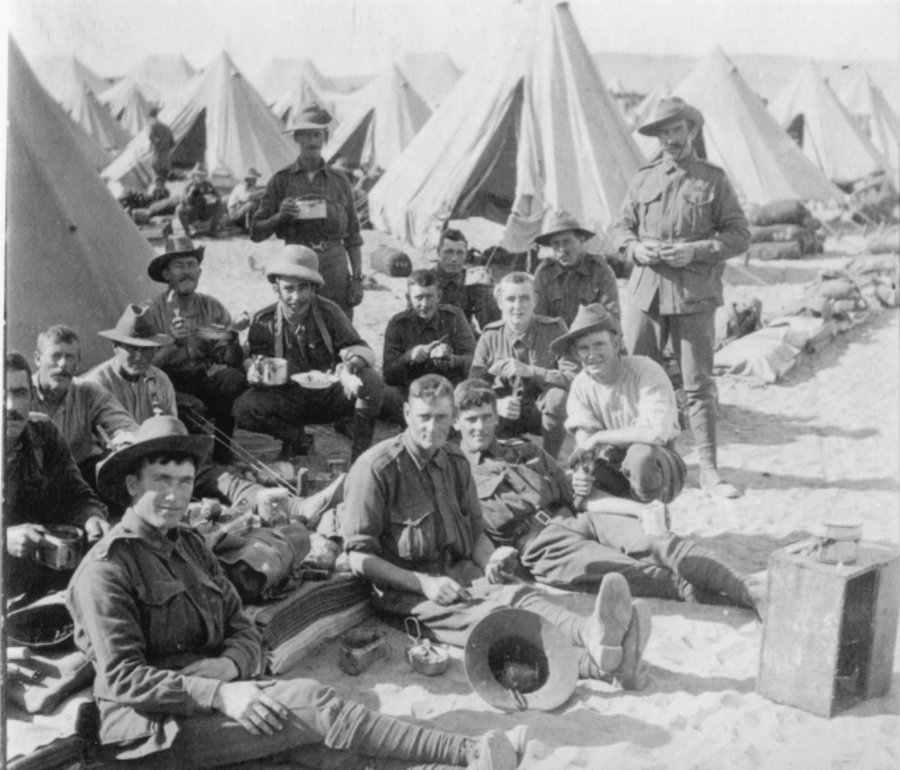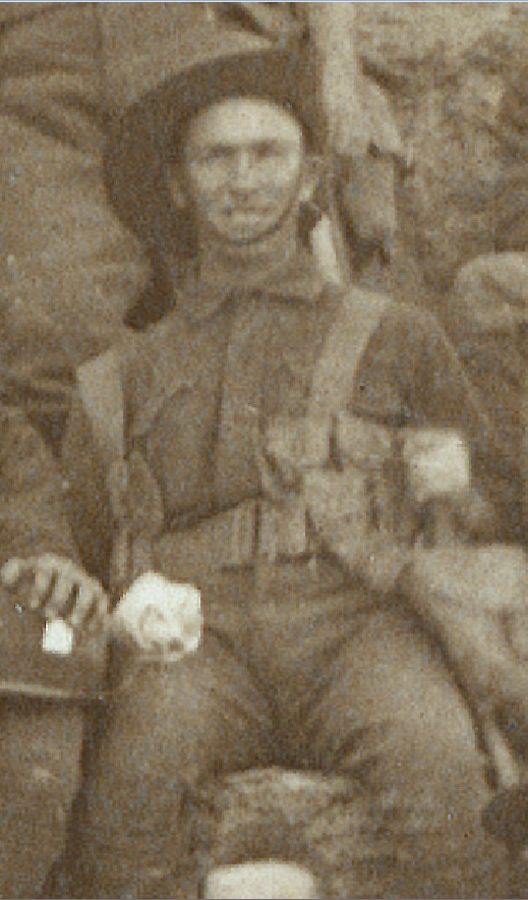INMAN, John William (Jack) - Not in Photo
INMAN, Edwin Stanley - RTA ID# 154

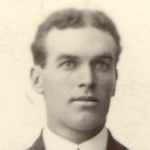
I do hope we will be spared to return to you dear people again
Australia is at war!
It was in August 1914 and with a heavy heart that Caroline Barlow learnt that Australia was at war.
Married at eighteen, she had given birth to thirteen children, eight by her abusive first husband, George Inman and five by her much younger second husband, Lambert Barlow.
Life in Fremantle, Western Australia in 1914, caring for a large family was incredibly difficult. But Caroline drew love, support and comfort from her two eldest sons, twenty five year old John (Jack) Inman, a postal employee and twenty year old grocer, Edwin (Ed) Inman.
As she both feared and dreaded, Jack and Ed saw it as their duty to fight for King and Country and were among the first to present themselves at Blackboy Hill, east of Perth and enlist for service abroad. Both were assigned to the 11th Battalion with the Service numbers 457 and 448 respectively. They were handsome boys, of similar height and build and displayed a relaxed air as they picnicked with family and friends at the camp where they received their initial training.
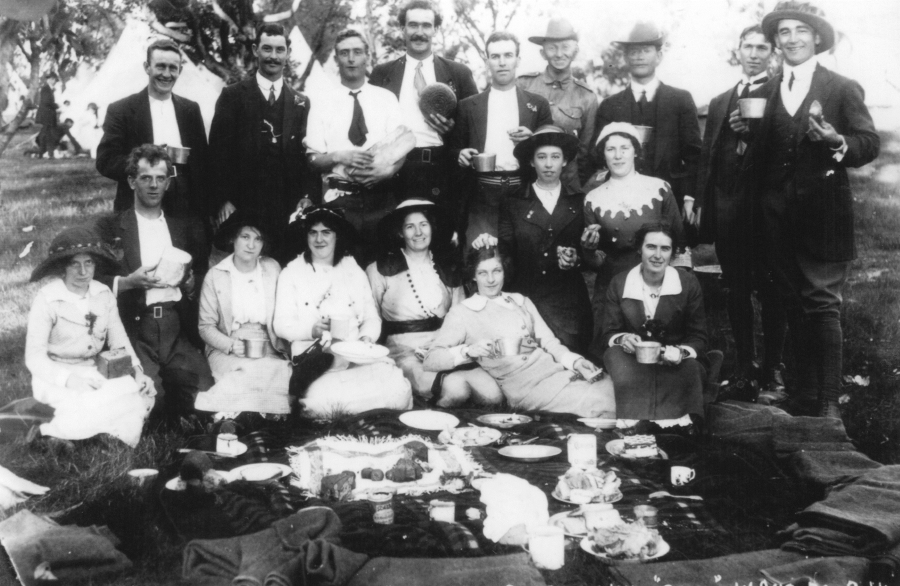 Picnic at Blackboy Hill ca September 1914.
Picnic at Blackboy Hill ca September 1914.
Standing back row 2nd from right is
Edwin Stanley INMAN, 5th from right is
John Willimam INMAN.
In a matter of weeks however, Jack developed a carbuncle, fell ill and was withdrawn from the battalion. Despite their desire to serve together the boys were separated. In late October, Jack was unable to join his mother Caroline at Fremantle wharf as she farewelled Ed and the West Australian and South Australian Battalions. He was in hospital having skin removed from his thigh and grafted to his back, all without anaesthetic. He wrote in his diary ‘It was as much as I could do to stand it’.
Four weeks later, Caroline was again at Fremantle wharf farewelling Jack, now with the new Service number 1202, who was sailing on the steamer Katoomba for Melbourne with the 1st Reinforcements of the 11th Battalion. The Themistocles which would later carry Jack from Melbourne to Alexandria Egypt, was not scheduled to call at Fremantle en route.
Christmas at Mena Camp, Egypt
Within weeks of celebrating Christmas 1914 in Egypt, Ed settled himself on the Great Pyramid with other members of the 11th Battalion and readied himself for the photographer’s signal to hold his pose. No doubt his thoughts were of his brother Jack then crossing the Indian Ocean and soon to arrive at Mena Camp outside of Cairo.
On February 28th Ed noted in his diary;
Thank God Jack came out this morning: he is going away with us but not in our platoon till we land.
The brothers were finally reunited and preparing to leave Egypt for further training on the Greek Island of Lemnos.
The Gallipoli landing
Saturday April 24th 1915 dawned and with the knowledge that they would face the enemy the following day, those men of the 11th Battalion who could find writing paper wrote of their fears and expressed their love and affection for those back home. Jack penned what were to be his final words to his mother Caroline who anxiously waited for news of her boys;
My dear Mother, brother and sisters.
You will see paper is scarce & so I am making the best of these few slips. I am so glad to say that I am now with Ed & Perce, at least in the section next to them. I feel satisfied now. It has been an awfully anxious time & I have had many disappointments, but thank goodness all is well now. We expect action in a few hours—one of the toughest problems yet attempted. I have plenty of faith in our boys & believe that whatever the result might be, no one could do the job better than we Australians.
Today we are all singing with the thought of moving off to do what we have spent months training for.
It has been a huge picnic time for 2 months past & now we are well & eager to do our duty.
After being separated in the confusion of the landing at Gallipoli the following day, Jack and Ed took cover in a recently deserted Turkish trench. With Jack at one end of the trench and Ed at the other, they communicated along the line until about 10 am after which Ed could not raise a response from his brother. Ed’s diary records that...
Jack was in the trench with me but disappeared...
Ed, who had been shot in the hand, was evacuated from the Gallipoli, believing at the time that Jack had been wounded but not killed.
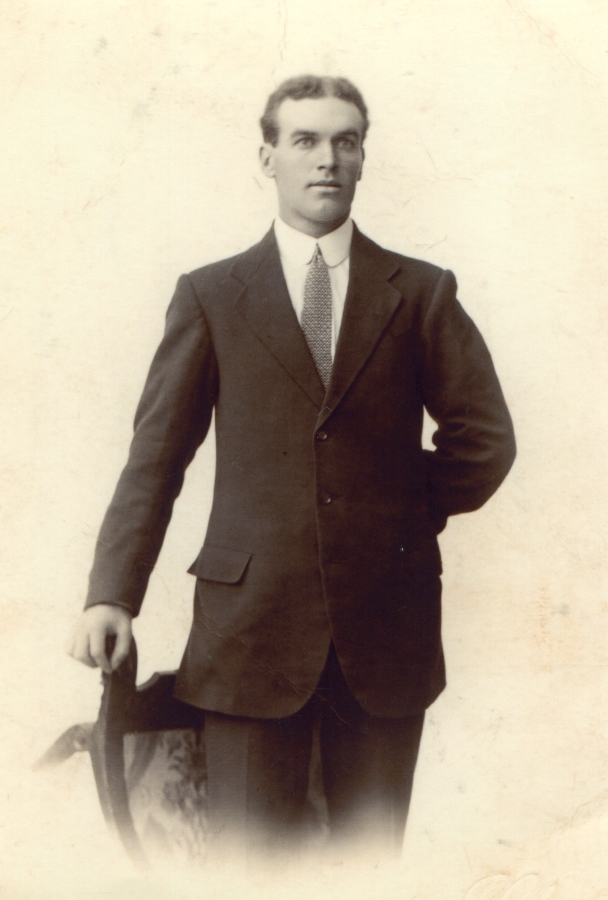 Over the next three months, Ed, Caroline and Jack’s sweetheart Jean, wrote frequent letters to Jack, but their missives were returned.
Over the next three months, Ed, Caroline and Jack’s sweetheart Jean, wrote frequent letters to Jack, but their missives were returned.
Caroline also sent polite and heartfelt letters to the army authorities expressing anxiety and frustration that they had been unable to provide her with any information on whether her son was alive or dead. They revealed her fears and deep concern about the fate of her eldest boy. Ed meanwhile made numerous enquiries about Jack both while he was recuperating and after he returned to the Dardanelles and he finally advised his mother that...
...it’s believed he was buried on the beach having died before he got to the [hospital] ship.
At a Court of Inquiry held on April 10, 1916, Jack was finally declared Killed in Action on 25th April 1915. Caroline was officially advised by telegram on 20th May, over twelve months after his death.
The Western Front
Just prior to the confirmation of Jack’s death, Ed was sent to France to join the fighting on the Western Front. Once again he was badly wounded and evacuated to England, returning again to the Western Front and re-joining his battalion the following December. His promotions in 1917 were rapid, first to temporary sergeant, then 2nd Lieutenant and finally to Lieutenant in August 1917 while fighting at Bayenghem, Belgium.
It was during this period that he was recommended for and awarded the Military Cross. The citation concludes;
To his initiative, energy and utter disregard of personal danger is due the maintenance of supplies.
(London Gazette 19 November 1917)
After further illness, some leave and a wound to the arm, he was finally transferred back to England in various postings prior to returning to Australia in February, 1919.
Caroline also wrote a number of letters to the military authorities regarding Ed, including a plea for him to be sent home after he was wounded multiple times. Her request however was ignored. Her letters revealed that she cared deeply about her sons and felt the loss of Jack very keenly.
Post War
After his return to Australia, Ed married Ruth Winifred Fleming in 1920 and their first child, a son born in 1921 was named John in memory of Ed’s much loved brother Jack. By 1925, Ed and his younger brother George, along with their wives Ruth and Mary, were farming at West Dukin, a small settlement in the wheatbelt near Koorda on what was possibly a Soldier Settlement farm. Their mother, Caroline now separated from her second husband Lambert Barlow was living with them.
By 1937 Ed and Ruth had moved to Burt Street, Boulder, and later to Kalgoorlie, where Ed worked as a miner. Caroline was still living with them when she died on 29 June 1941 in Kalgoorlie, aged 71. At this time Australia was at war once again and Ed served briefly during World War II at Northam.
Edwin Stanley INMAN died at the age of seventy eight at Woodlands, Western Australia in August 1972.
A nobility of purpose
Jack died on the first day of Australia’s involvement in the Great War and his final resting place is unknown. The remains of his brother Ed, who served so courageously for the entire length of the conflict were taken after his death by the War Graves section of Karrakatta Cemetery located near Perth, Western Australia.
Jack Inman’s final words to his mother have not lost their poignancy one hundred years on;
...but should either or both of us fall & never see you on this earth, you can always remember that your offspring did what they honestly believed to be their bounden duty—namely to assist the Mother Land in an hour of need.
Written by Julie Martin and Trish Allen. Researched by Trish Allen.
Our thanks to Ted Inman, son of Ed Inman for providing photographs and excepts from his father’s diary and the diary and letters of his Uncle John (Jack) Inman.
Sources
National Library of Australia, Trove (http://trove.nla.gov.au)
National Archives of Australia (http://naa.gov.au)
Gill, Ian: Fremantle to France: 11th Battalion A.I.F. 1914-1919 p190-192
Lovelady, Shannon: Article in Post (Community News) April 25, 2015, p46
Inman, John (Jack) William – Diary excerpt & letter (courtesy Inman family)
Inman, Edwin Stanley – Diary excerpt (courtesy Inman family)
Australia’s fighting sons of the Empire. p188
Images
Courtesy of;
The Inman family collection
WAGS 11th Battalion project
